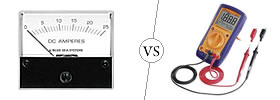Difference between Wet Market and Dry Market
Key Difference: Wet Markets are markets that are associated with fresh foods, wet floors and humid temperatures. In these markets, sellers constantly use water to wash down foods and floors to keep them clean and humid. Dry market is a slang term that is used to describe a market that is associated with dry goods. A dry market is not a term that exists widely during usage and is only found in certain places. Dry markets usually have dry goods such as textiles, furniture¸ clothing stores, etc. These stores sometimes provide wholesale prices on such goods.
Wet markets and dry markets are two different kinds of markets that are available in many Asian countries. These can often be confusing for many people that do not live in such countries. Wet markets are usually markets that have wet floors and are associated with fruits, vegetables, seafood, poultry, etc. Similarly, dry markets are markets that deal with dry goods such as textiles, carpets, clothing stores, spices, dried fruits, etc. Once the concept of wet goods and dry goods are understood, it is quite easy to understand the differences between the two
 Wet Markets are markets that are associated with fresh foods, wet floors and humid temperatures. These markets are popular in many Asian countries and are now popping over in select places in even non-Asian countries. Asian countries such as Hong Kong, China, Japan and Philippines are famous for their wet markets, with many tourists visiting these wet markets for the ‘authentic cultural experience’. Wet markets usually have an array of fresh fruits, vegetables, sea food and poultry. The term ‘wet markets’ comes from the constant use of water in these markets, on floors, on fruits and vegetables, tanks of live sea creatures, etc.
Wet Markets are markets that are associated with fresh foods, wet floors and humid temperatures. These markets are popular in many Asian countries and are now popping over in select places in even non-Asian countries. Asian countries such as Hong Kong, China, Japan and Philippines are famous for their wet markets, with many tourists visiting these wet markets for the ‘authentic cultural experience’. Wet markets usually have an array of fresh fruits, vegetables, sea food and poultry. The term ‘wet markets’ comes from the constant use of water in these markets, on floors, on fruits and vegetables, tanks of live sea creatures, etc.
In wet markets, sellers constantly use water to wash down foods and floors to keep them clean and humid. The humidity in the temperature ensures that the food stay fresh for longer periods of time. These markets are open from sunrise to late night, with the best produce being found early in the morning or in the evening. These markets also offer small live animals and sea food options. The people get to see the small animals and choose them before the animal is killed and skinned in front of them. The is a controversial process as many animal welfare activists are criticizing the small cages the animals are locked in and the conditions in which animals are kept against animals rights.
Originally wet markets would also have large live animals in these markets, but since the spread of diseases and lack of proper placing of the animals, they have since become an uncommon feature of the market. Though, the market ensures that the food found is fresh, there are also high chances of contamination. This is due to open nature of the market, where flies and germs have easy access to the foods. In addition to having wet foods, the market also dried goods such as spices, processed tofu, flowers and cooked meats. The goods at a wet market come from local farms, with the vendor setting his/her own price depending on what they want. Getting the best price and the freshest food is the task of the purchaser. A new trend that has been popping up in many places is an enclosed wet market, where large buildings are rented out to stall vendors and the market is placed in that building. This is considered a little healthier than the open market.
 Dry market is a slang term that is used to describe a market that is associated with dry goods. A dry market is not a term that exists widely during usage and is only found in certain places. The term refers to any market that sells any type of goods that do not require water. These markets do not necessarily need to be called as a dry market, it can be known as a specialty market or a specialty store. The term ‘dry markets’ are used more commonly in Asian countries and Middle-Eastern countries, while the western countries use dry stores, instead. Dry markets usually have dry goods such as textiles, furniture¸ clothing stores, etc. These stores sometimes provide wholesale prices on such goods.
Dry market is a slang term that is used to describe a market that is associated with dry goods. A dry market is not a term that exists widely during usage and is only found in certain places. The term refers to any market that sells any type of goods that do not require water. These markets do not necessarily need to be called as a dry market, it can be known as a specialty market or a specialty store. The term ‘dry markets’ are used more commonly in Asian countries and Middle-Eastern countries, while the western countries use dry stores, instead. Dry markets usually have dry goods such as textiles, furniture¸ clothing stores, etc. These stores sometimes provide wholesale prices on such goods.
Dry markets are also not limited to having just these items and can also items such as spices, household items, kitchen appliances, snacks, dried fruits and many other items. Dry markets are quite similar to wet markets in terms of layout and pricing. Vendors in dry markets get supplies from local small stores in bulk and then place their own prices on the item. The customers are free to bargain the prices or find other vendors that are willing to pay the price. Similar to wet markets, the dry markets can be outdoors under a canopy or in huge buildings.
Image Courtesy: mmtriplog.wordpress.com, commons.wikimedia.org









Add new comment